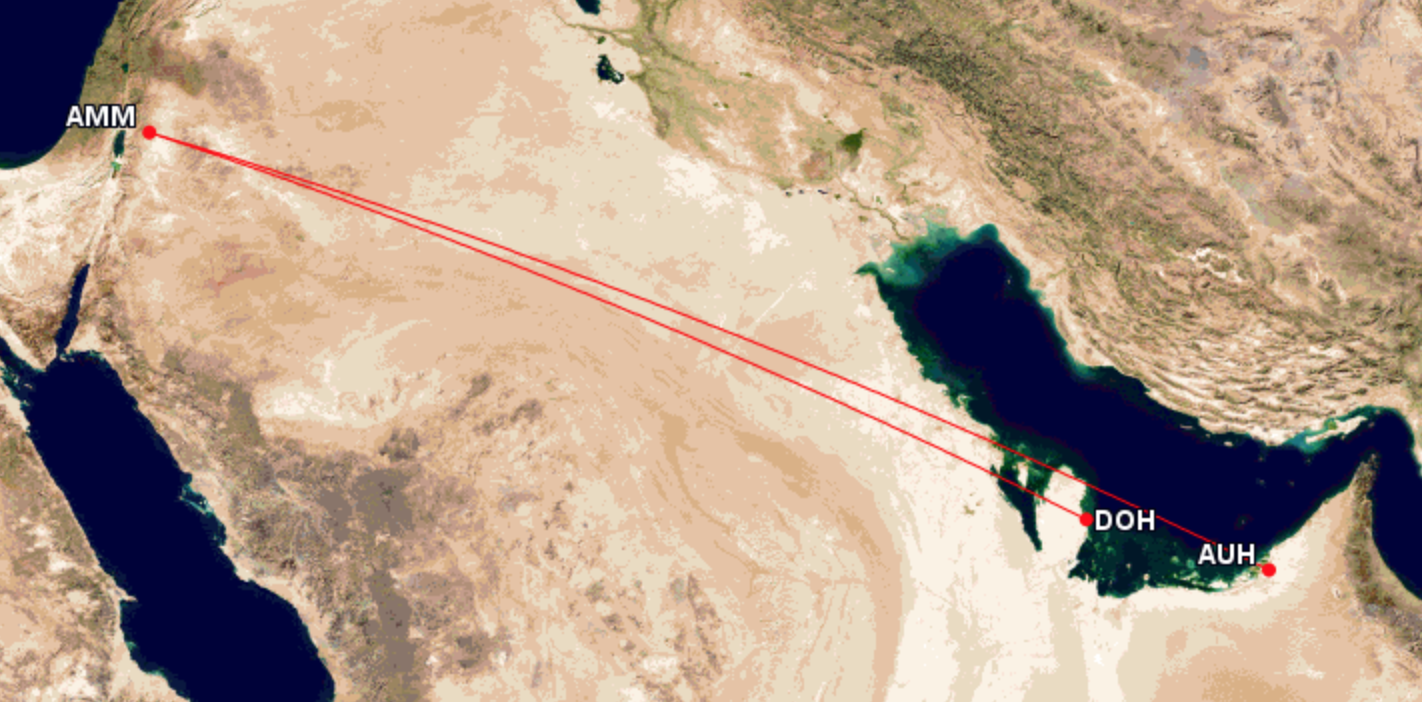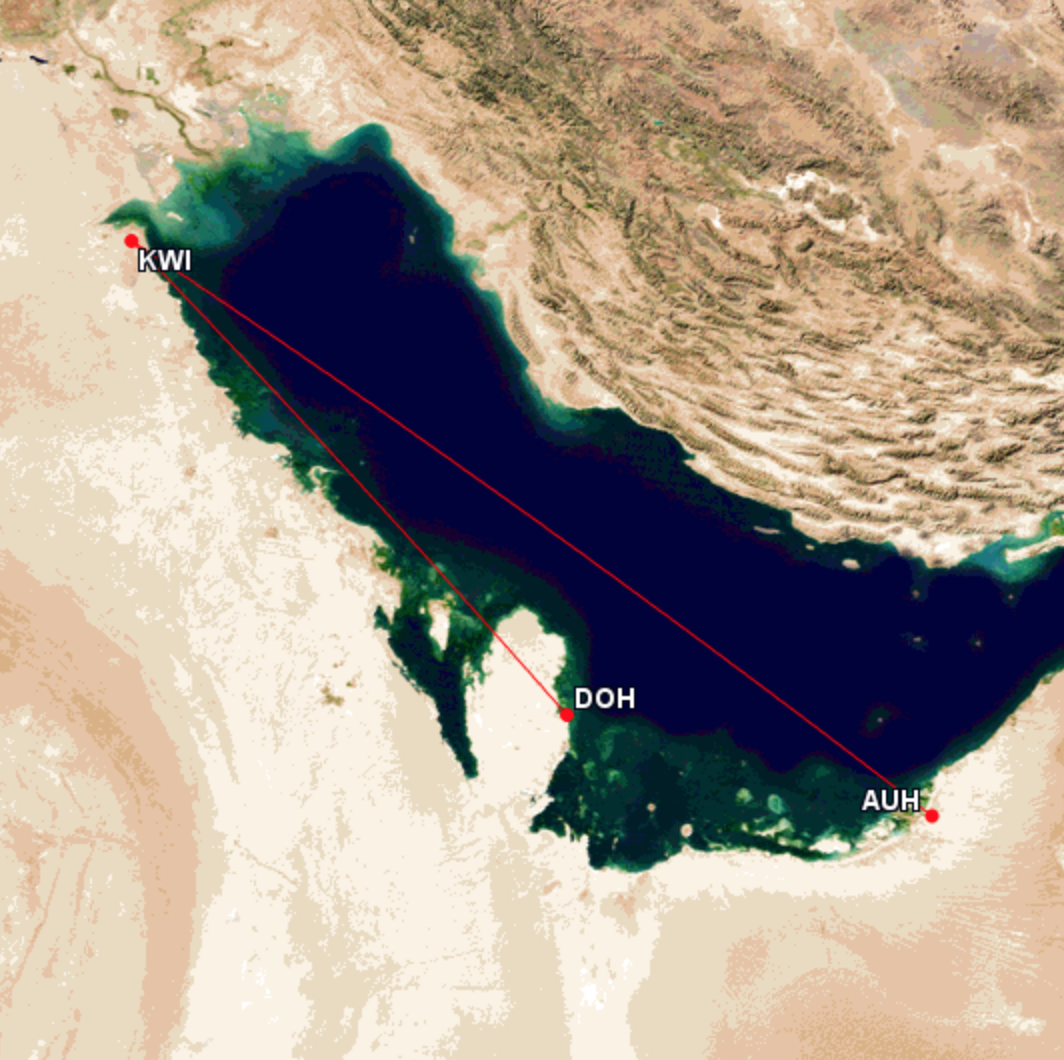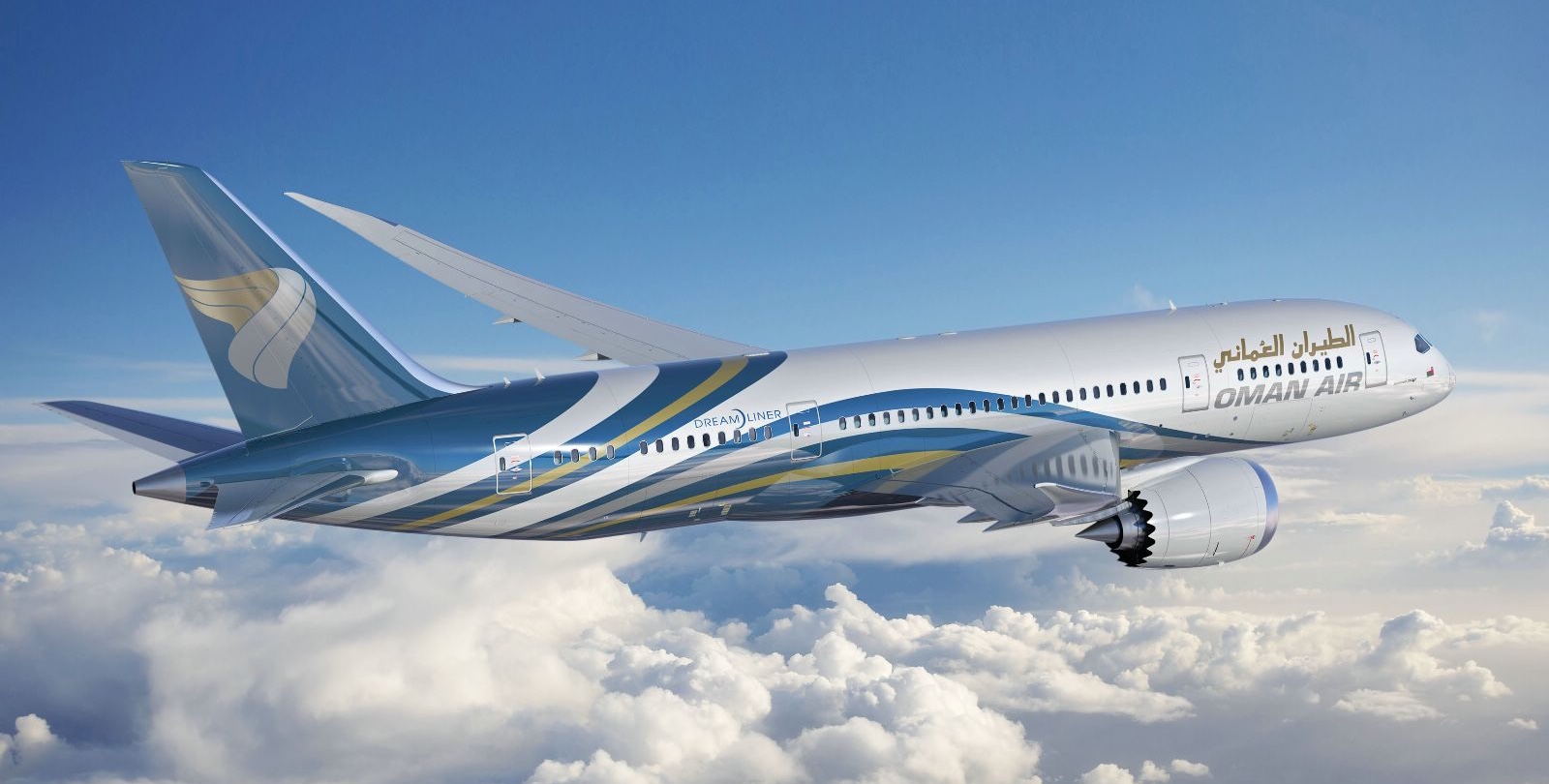What happens when you need to travel between Saudi Arabia or the UAE and Doha? Answer: take Oman Air. As one of the easiest way to sidestep the Qatar embargo, the Omani national airline has found itself suddenly in very high-demand.
Traveling “across enemy lines” now involves transit via Amman, Beirut, Kuwait City or Muscat.
Traveling via Ammann and Beirut are significantly out of the way if you’re in the UAE (less so if you’re traveling to/from Saudi Arabia)–


But traveling from the UAE to Doha via Kuwait or Muscat takes less time–


The UAE has blocked any carrier traveling to/from Qatar from using its airspace, but that merely adds to flight time rather than creating a blockade.
Oman Air has a better reputation in the region (and is, by all accounts, a better carrier) than Kuwait Airlines and stands to gain handsomely from the ban.
In fact, it is already using larger aircraft to accommodate increased demand. An Oman Air spokesman confirmed–
Oman Air is upgrading its flights to Doha to bigger aircraft with more capacity from June 8 till June 1.
Qatar Airways is also using Oman Air to act as a charter for its citizens stranded in the UAE, KSA, Bahrain, and Egypt. On the flip side, thousands of Egyptians, Emiratis, and Saudis are trapped in Qatar and must transit via a neutral country to get home. Oman Air is going to be busy.
CONCLUSION
One man’s famine is another man’s feast.
Kuwait’s ruler Sheikh Sabah Al Ahmad Al Sabah is acting as a mediator between the two sides. There is some hope that resolution can be reached in the coming days, though I’d consider that overly-optimistic speculation. But for now, Oman Air and three other second-tier regional rivals are cashing in on the woes of the Big 3.





Oman has finished preparations for becoming a regional hub for exports and imports, after billions of rials of investment for the development of ports along the country’s coast line, according to a report.